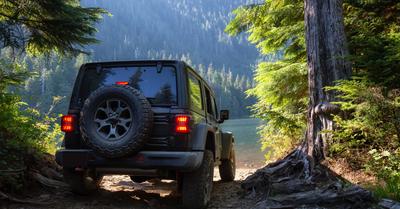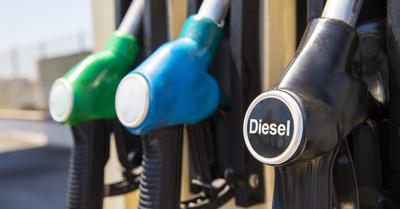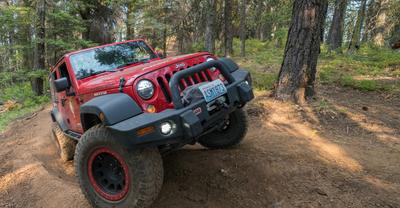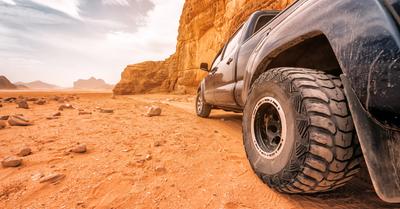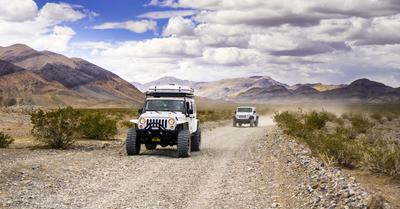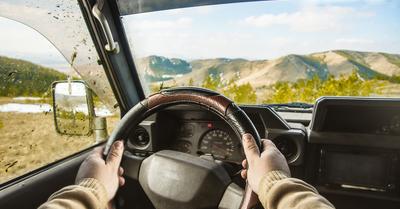BLM land is plentiful and offers some of the best open natural scenery in the country. But is it open to the public and legal to drive off-road vehicles?
Yes, you can off-road on BLM land. The agency has countless dirt roads and trails specifically for recreational off-roading. But there are many areas where it’s not allowed—and it’s important to stay off them.
In this article, we’ll go over the rules of off-roading on BLM land. We’ll also cover where and what BLM land is and to what extent the public has access to it.
We sourced the information used in this article from local off-roading guides and the Bureau of Land Management’s guidelines on off-road vehicle use.
This article may contain affiliate links where we earn a commission from qualifying purchases.
What Are BLM Lands?
The Bureau of Land Management, or BLM, is a federal agency responsible for millions of acres of American wildland across many states. This is often called ‘public land’ by off-roaders, but it’s distinct from National Parks, State Parks, and National Forests.
In a lot of cases, nobody really knows what the Bureau of Land Management does with all of its lands. Sometimes it sells it, sometimes it fences it up for no reason, but it usually does absolutely nothing with it.
After all, the federal government technically isn’t supposed to hold land. So it opens it to the public for activities such as camping and hunting, as over 99 percent of BLM land can be used for these purposes.
Logging and mining are common on and around BLM lands. But in almost all cases, you’re completely allowed to wander pretty much anywhere on BLM land. It’s open to the public—unless stated otherwise.
BLM Land Designations
BLM land is often designated by type and use. For example, areas designated for camping are designated as campsites, and areas being logged are designated for logging.
Lots of BLM land is designated as wilderness, which affords it protection from most intrusive and industrial human activities.
Can You Legally Drive on BLM Land?
Yes, you can drive off-road legally on BLM land—but not all of it. The only places where off-roading is legal is on dirt roads and specially designated off-roading areas. There are plenty of these on BLM land, and most roads that you can drive on are made of dirt as it is.
Campsites are another area where it’s legal to drive, as you need a car to get to many of them. Some BLM campsites require off-road vehicles to reach, and many areas where it's legal to drive a car also allow ATVs and dirt bikes.
Who Patrols BLM Land?
So, who patrols BLM land to make sure nobody is off-roading in areas where it’s not allowed? Usually, nobody—there is very little enforcement in most BLM land areas. The further the activity takes place from the highway, the less likely it is to garner any attention.
In some cases, BLM land goes totally un-patrolled. This is because some jurisdictions don’t really know whose job it is to patrol. State Fish and Game officers are a common sight as they patrol the area for poaching and fishing license enforcement. Sometimes, local sheriff’s departments can be found too.
But overall, law enforcement is rare on BLM land. In most areas, the only thing that would attract law enforcement attention is suspicion of serious illegal activity, such as large-scale dumping or drug manufacturing operations.
How to Find Legal Off-Road BLM Trails
Legal trails usually begin when maintained roads stop. If you’re on the road on BLM land, and it’s not marked with a prohibitive sign, you’re probably good to engage in off-road activities—as long as you stay away from private property and livestock.
The Bureau of Land Management openly encourages off-road and OHV activities on its land, provided a few conditions are met. The BLM recommends wearing safety gear and installing spark arrestors on motorcycles to prevent fires.
State Laws and BLM Land
BLM land defaults to state law. Unlike National Forests, which often default to Federal law, you’ll have to follow your state’s driving regulations when operating an off-road vehicle on BLM land.
That means that rules regarding noise levels and similar requirements must be followed. Depending on the state and locality, you may be exempt from emissions control and noise restrictions while operating off-road—but it’s best to check in advance to be sure.


